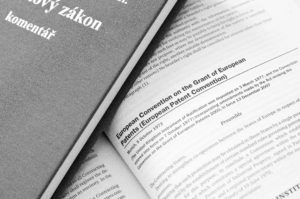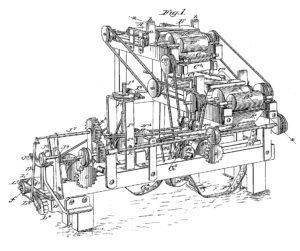Definitions:
Biological material means any material containing genetic information and capable of reproducing itself or being reproduced in a biological system.Microbiological process means any process involving or performed upon or resulting in microbiological material,
Essentially biological process for the production of plants or animals means such a process, which consists entirely of natural phenomena such as crossing or selection.
Patentable biotechnological inventions
Biotechnological inventions are patentable, if they concern
a) biological material, which is isolated from its natural environment or produced by means of a technical process, even if it previously occurred in nature,
b) plants or animals, if the technical feasibility of the invention is not confined to a particular plant or animal variety, or
c) microbiological or other technical process and a product, other than a plant or animal variety, obtained by this way.
Exclusions of patentability
Patents shall be not granted to
a) inventions, whose commercial exploitation would be contrary to public policy or to principles of morality, namely to processes for cloning human beings, processes for modifying the germ line genetic identity of human beings, processes of using human embryos for industrial or commercial purposes or processes for modifying the genetic identity of animals, which are likely to cause them suffering without any substantial medical benefit to man or animal, and also to animals resulting from such processes; however, the contradiction to public policy or to principles of morality shall not be deduced merely from the fact that the exploitation of the invention is prohibited by legal regulation,
b) human body at various stages of its formation and development, and the simple discovery of one of its elements, including the sequence or partial sequence of a gene; it does not apply to an element isolated from the human body or otherwise produced by means of a technical process, including the sequence or partial sequence of a gene, even if the structure of that element is identical to that of a natural element, and
c) plant and animal varieties or essential biological processes for the production of plants or animals.
Special provisions on the application of biotechnological invention
Where an invention involves the use of or concerns biological material which is not available to the public and which cannot be described in a patent application in such a manner as to enable the invention to be reproduced by a person skilled in the art, the description shall be considered inadequate unless:
a) the biological material has been deposited no later than the date, from which the right of priority belongs to the applicant, with the recognised depositary institution, which has acquired this status by virtue of Article 7 of the Budapest Treaty of 28 April 1977 on the International Recognition of the Deposit of Microorganisms for the Purposes of Patent Procedure,
b) the application of invention as filed contains such relevant information as is available to the applicant on the characteristics of the biological material deposited, and
c) the patent application states the name of the depository institution and the accession number of the sample.
Access to the deposited biological material shall be provided through the supply of a sample:
a) between the first publication of the application and the granting of the patent, to anyone requesting it (hereinafter referred to as the “petitioner”) or, if the applicant so request, only to an independent expert, or
b) after the patent has been granted, and notwithstanding cancellation of the patent, to anyone requesting it.
The sample shall be supplied only if the petitioner or an independent expert in terms of paragraph 2 undertakes, for the term during which the patent is in force:a) not to make the sample or any material derived from it available to third parties, and
b) not to use the sample or any material derived from it except for experimental purposes, unless the applicant for or proprietor of the patent, as applicable, expressly waives such an undertaking.
The applicant is entitled to limit access to the deposit material for 20 years from the date on which the patent application was filed to anybody, except an independent expert, even in case, where the application is refused or withdrawn.
The applicant shall notify the limitation of access to the deposit biological material to the Office of the Contracting State at the latest on the date, on which the preparations for publishing the patent application have been completed. The Office will publish such a limitation of access to the deposit biological material together with the invention application in the National Bulletin of the Office.
If the biological material deposited ceases to be available from the recognised depository institution, a new deposit of the material shall be permitted on the same terms as those laid down in the Budapest Treaty.
Any new deposit shall be accompanied by a statement signed by the depositor and certifying that the newly deposit biological material is the same as that originally deposited.
If the application concerns an invention of the sequence or partial sequence of a gene, their industrial applicability must be made obvious in the patent application.

 At the request of the proprietor, the European patent may be revoked or be limited by an amendment of the claims. The request shall be filed with the European Patent Office in accordance with the Implementing Regulations. It shall not be deemed to have been filed until the limitation or revocation fee has been paid.
At the request of the proprietor, the European patent may be revoked or be limited by an amendment of the claims. The request shall be filed with the European Patent Office in accordance with the Implementing Regulations. It shall not be deemed to have been filed until the limitation or revocation fee has been paid.